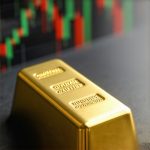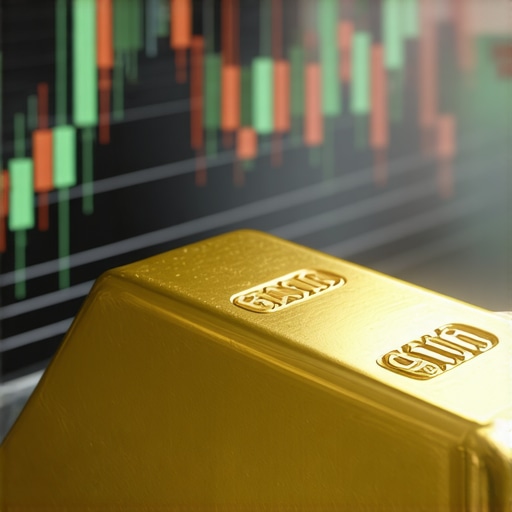Understanding Gold Prices and Market Demand
Gold has long been regarded as a safe-haven asset, especially during times of economic uncertainty. As investors look for stability, the demand for gold often rises, subsequently influencing its market price. The intricate relationship between gold prices and demand is shaped by various factors, including global economic conditions, geopolitical tensions, and investor sentiment.
The Role of Demand in Shaping Gold Prices
When discussing the impact of demand on gold prices today, it’s essential to recognize that demand can stem from multiple sources. These include central banks, jewelry manufacturers, and investment vehicles such as gold ETFs and bullion. For instance, central banks have been known to increase their gold reserves as a hedge against inflation and currency fluctuations, driving prices higher.
Furthermore, retail demand, particularly in countries like India and China, plays a significant role in influencing gold prices. During festivals or wedding seasons, the surge in gold jewelry purchases can lead to a notable rise in demand, impacting the overall market dynamics.
Global Economic Factors Influencing Demand
The demand for gold is significantly impacted by global economic conditions. In times of economic growth, investors may prefer riskier assets, leading to a decline in gold demand. Conversely, during economic downturns or periods of instability, gold becomes a preferred asset for preserving wealth. This shift in investor behavior is crucial for understanding fluctuations in gold prices.
Additionally, monetary policies enacted by central banks can affect demand. Lower interest rates generally make gold more attractive since the opportunity cost of holding non-yielding assets decreases. As such, when central banks implement expansionary policies, the demand for gold can surge, leading to an increase in its price.
Geopolitical Tensions and Their Effects
Geopolitical tensions also play a vital role in shaping demand. Events such as conflicts, trade wars, or political instability can lead to heightened uncertainty in the markets. In such scenarios, investors often turn to gold as a safe haven, further driving up demand and consequently, prices. Understanding the interplay between these geopolitical factors and gold demand can provide valuable insights for investors looking to navigate the market.
Conclusion: The Future of Gold Prices
As we explore the impact of demand on gold prices today, it becomes clear that various factors contribute to this dynamic relationship. From economic conditions to geopolitical events, the demand for gold remains a critical driver of its price. Investors keen on capitalizing on gold investments should stay informed about these influencing factors and consider strategies to maximize their returns. For more insights, check out our articles on maximizing returns through gold ETFs and effective gold investment strategies for 2025.
Analyzing Gold Price Fluctuations: Key Drivers for Investors
Understanding the fluctuations in gold prices is essential for investors seeking to navigate the complexities of the market. Numerous factors contribute to the volatility of gold prices, including economic indicators, investor behavior, and external events. By examining these drivers, investors can make informed decisions regarding their gold investments.
Economic Indicators and Their Impact on Gold Prices
Key economic indicators such as inflation rates, unemployment figures, and GDP growth significantly influence gold prices. For instance, rising inflation typically leads to increased demand for gold as a hedge against currency devaluation. In contrast, strong economic growth may cause investors to gravitate towards equities rather than safe-haven assets like gold.
Moreover, unemployment rates can serve as a barometer for economic health. High unemployment often correlates with increased gold demand, as investors seek stability during uncertain times. Monitoring these economic indicators can provide valuable insights into potential movements in gold prices.
Investor Sentiment and Market Behavior
The psychology of investors plays a crucial role in determining gold prices. When market sentiment is bearish, investors tend to flock towards gold, driving prices up. Conversely, bullish sentiment may result in a sell-off of gold assets. Understanding the prevailing investor sentiment can help investors anticipate price movements and adjust their strategies accordingly.
External Events: The Influence of Global Crises
Global crises, such as pandemics, wars, or natural disasters, can trigger a surge in gold prices. During such events, investors often seek refuge in gold, leading to increased demand. For instance, the COVID-19 pandemic resulted in unprecedented demand for gold as a safe-haven asset, causing significant price increases. Keeping an eye on current events and their potential impact on the gold market can help investors capitalize on opportunities.
Technical Analysis: Charting Gold Price Trends
Utilizing technical analysis can also offer insights into gold price trends. By examining historical price data and identifying patterns, investors can make educated predictions about future price movements. Tools such as moving averages, support and resistance levels, and trend lines can be beneficial for investors looking to time their entries and exits effectively.
Conclusion: Proactive Strategies for Gold Investment
In conclusion, understanding the factors affecting gold prices is paramount for any serious investor. From economic indicators to investor sentiment and external events, multiple elements intertwine to shape the gold market. Investors looking to maximize their returns should consider incorporating these insights into their investment strategies. For comprehensive strategies and tips, explore our articles on effective gold investment strategies and maximizing returns in 2025.
Understanding Gold Price Trends: Strategies for Informed Investors
As the gold market continues to evolve, staying informed about emerging trends is crucial for investors aiming to optimize their portfolios. Identifying key patterns and shifts in the market can empower investors to make proactive decisions regarding their gold investments.
Global Economic Factors Influencing Gold Value
The interplay between global economic conditions and gold prices is complex and multifaceted. Factors such as currency fluctuations, interest rates, and geopolitical stability can significantly impact gold’s value. For example, a weakening dollar often leads to a rise in gold prices, as gold becomes cheaper for foreign investors. Conversely, higher interest rates may diminish gold’s appeal as a non-yielding asset, prompting investors to seek higher returns elsewhere.
Monitoring central bank policies is also essential. Central banks play a pivotal role in the demand for gold, especially when they engage in gold purchases to diversify their reserves. This has a direct impact on the market, often leading to increased prices during times of heightened central bank activity. Understanding these dynamics can greatly enhance an investor’s ability to navigate the gold market effectively.
The Role of Supply and Demand in Gold Pricing
Supply and demand dynamics are fundamental in determining gold prices. Factors such as mining outputs, recycling rates, and changes in jewelry demand can significantly affect the availability of gold in the market. For instance, if the mining industry faces disruptions, it may lead to a supply crunch, which in turn can drive prices higher. Investors should stay informed about industry news and reports that highlight changes in gold supply and demand, allowing them to assess potential price movements.
Technological Advancements and Their Impact on Gold Trading
Advancements in technology have transformed how gold is traded, making it more accessible and efficient for investors. Online trading platforms and digital gold investment options, such as gold ETFs and mutual funds, have democratized access to gold investments. Moreover, the rise of blockchain technology is fostering transparency in transactions, which can influence investor trust and market behavior.
Investors should explore how these technological changes can be leveraged to enhance their trading strategies. For instance, utilizing data analytics tools can provide insights into market trends and help investors make informed decisions more effectively.
Long-Term Gold Investment Strategies
For those looking to invest in gold as part of a long-term strategy, understanding market cycles is essential. Gold has historically been viewed as a safe-haven asset, particularly during economic downturns. Therefore, implementing a strategy that involves dollar-cost averaging can mitigate the effects of market volatility and enhance overall returns.
Additionally, diversifying gold investments across various forms, such as bullion, coins, and ETFs, can provide a balanced approach to risk management. This way, investors can capitalize on different market conditions while minimizing potential losses.
Conclusion: Navigating the Gold Market with Insight
In conclusion, understanding the intricacies of gold price trends is essential for any investor looking to navigate this dynamic market effectively. By analyzing global economic factors, supply and demand dynamics, and technological advancements, investors can develop strategies that align with their financial goals. For further insights into effective gold investment strategies, consider exploring our comprehensive guides on modern gold investment strategies and the benefits of gold IRAs.
Understanding Market Volatility in Gold Investments
Investing in gold requires a nuanced understanding of market volatility. Price fluctuations can be influenced by a myriad of factors, including economic indicators, geopolitical tensions, and market sentiment. For instance, during periods of uncertainty, such as geopolitical conflicts or economic downturns, gold often sees a surge in demand as investors flock to safe-haven assets.
Impact of Geopolitical Events on Gold Prices
Geopolitical events can dramatically shift the landscape of gold prices. When tensions rise in key regions, the demand for gold tends to increase, driving prices higher. Investors should keep an eye on current events and their potential impacts on the market. For example, recent conflicts in oil-rich regions can lead to spikes in gold prices as investors seek stability amidst uncertainty.
Historical trends have shown that gold prices often rise in response to such events, making it imperative for investors to stay informed. By understanding how geopolitical events correlate with gold price movements, investors can make more strategic decisions. For more insights on how to analyze gold price trends, check out our guide on spotting gold price fluctuations.
Utilizing Technical Analysis in Gold Trading
Technical analysis is a powerful tool for investors seeking to make informed decisions in the gold market. By analyzing historical price data and patterns, investors can identify trends and potential reversal points. Key indicators, such as moving averages and relative strength index (RSI), can provide valuable insights into market dynamics.
Investors should consider employing technical analysis alongside fundamental analysis to gain a comprehensive view of the gold market. By integrating these methodologies, investors can better navigate market volatility and enhance their trading strategies. For those starting in this area, our post on gold trading techniques offers essential guidance.
Long-Term vs. Short-Term Gold Investment Approaches
Different investment strategies can yield varying results in the gold market. Long-term investors often take a buy-and-hold approach, capitalizing on gold’s historical tendency to appreciate over time. This strategy is particularly effective during economic uncertainty, where gold acts as a hedge against inflation.
Conversely, short-term investors may seek to benefit from price fluctuations through active trading. This requires a keen eye on market trends and the ability to react quickly to changes. Understanding which approach aligns with your investment goals is crucial. For a deeper dive into various strategies, refer to our post on top gold trading techniques.
Conclusion: Crafting a Resilient Gold Investment Portfolio
In conclusion, navigating the complexities of gold investments requires a multifaceted approach. By understanding market volatility, geopolitical influences, and employing effective trading strategies, investors can craft resilient portfolios that withstand the tests of time. For further insights on building a solid gold investment strategy, explore our comprehensive resources on modern investment strategies and demand trends in gold investments.
Frequently Asked Questions About Gold Investments
What are the main factors that influence gold prices?
Gold prices are influenced by a variety of factors including economic indicators, inflation rates, supply and demand dynamics, and geopolitical tensions. Economic instability often leads investors to seek safety in gold, driving up its price.
Is gold a good investment during inflation?
Yes, gold is traditionally viewed as a hedge against inflation. As the cost of living increases, the purchasing power of fiat currency decreases, leading investors to turn to gold to preserve their wealth.
How can I start investing in gold?
You can start investing in gold in several ways: purchasing physical gold, investing in gold ETFs (Exchange-Traded Funds), or buying shares in gold mining companies. Each method has its own risks and benefits.
What are the risks associated with gold investments?
Gold investments carry risks such as market volatility, potential for loss if prices decline, and liquidity issues with physical gold. It’s essential to conduct thorough research and consider diversifying your portfolio.
How does gold perform during economic downturns?
During economic downturns, gold often performs well as it is considered a safe-haven asset. Investors flock to gold to protect their capital, which can lead to price increases.
What is the best time to invest in gold?
The best time to invest in gold can vary based on market conditions. Generally, many investors consider purchasing gold during periods of economic uncertainty or when prices are low.
Can I invest in gold through my retirement account?
Yes, you can invest in gold through a self-directed IRA or 401(k). These accounts allow you to hold physical gold or gold ETFs as part of your retirement portfolio.
Are there tax implications for selling gold?
Yes, selling gold can trigger capital gains taxes. The rate depends on how long you held the investment. Short-term capital gains apply if held for less than a year, while long-term rates apply for holdings over a year.
How much gold should I include in my investment portfolio?
The amount of gold to include in your portfolio often depends on your financial goals and risk tolerance. Generally, financial advisors recommend allocating 5-10% of your investment portfolio to gold.
Authority Resources for Gold Investments
To further enhance your understanding of gold investments, consider exploring the following trusted sources:
- World Gold Council – Provides comprehensive insights and research on gold markets.
- Investing.com – Offers real-time updates and analysis on gold prices and market trends.
- Kitco – A leading source for precious metals market news and data.
- BullionVault – Allows users to buy, sell, and store gold and provides educational resources.
- Federal Reserve – For economic indicators that impact gold prices.
Conclusion: Your Path to Successful Gold Investments
In summary, mastering gold investments requires an understanding of market volatility, strategic approaches, and the ability to stay informed about global events. By leveraging the insights provided in this article, along with the authority resources listed, you can create a robust investment strategy that aligns with your financial goals. Investing in gold can be a smart move, especially as it continues to serve as a reliable hedge against inflation and economic uncertainty. Take the time to research, analyze, and develop a plan that suits your needs, ensuring that you navigate the complexities of the gold market with confidence.











What really caught my attention in the post is how central banks significantly influence gold prices by increasing their reserves during uncertain economic times. I’ve noticed that in several recent reports, countries have ramped up their gold holdings as a hedge against inflation, especially when fiat currencies face volatility. Additionally, the cultural aspect—like the surge in jewelry demand during festivals and weddings in India and China—adds an intriguing layer to gold price movements that often gets overlooked in purely financial analyses. From my experience as a casual investor, such external factors make gold quite different from typical equities or bonds. It seems that understanding these multifaceted drivers is key to making smarter gold investment decisions. I’m curious, have others found it challenging to balance the influence of geopolitical tensions with economic indicators when deciding entry points for gold investments? How do you weigh the unpredictable spikes in demand due to geopolitical events against longer-term economic trends when charting gold price strategies?